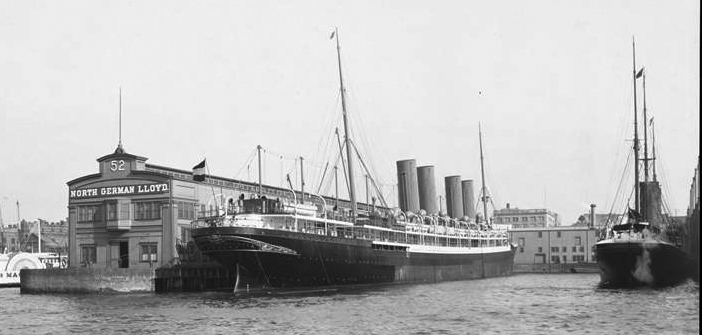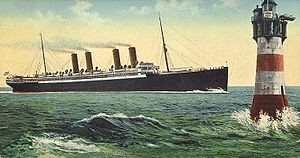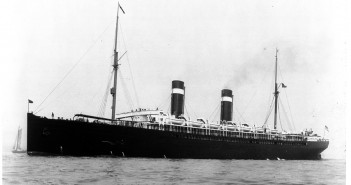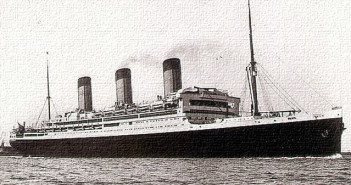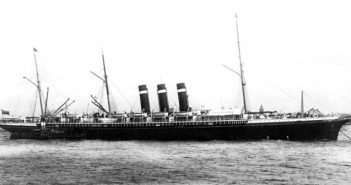Launched on 30 March 1901 at the AG Vulcan shipyard in Stettin, Germany, Norddeutscher Lloyd’s Kronprinz Wilhelm departed on her maiden voyage—Bremerhaven-Southampton-Cherbourg-New York—on 17 September 1901
The 14,908 GRT Kronprinz Wilhelm was 663 feet long and 66 feet at beam and could carry up to 526 passengers. Kronprinz Wilhelm was similar to her fleetmate, Kaiser Wilhelm der Grosse. Like her slightly smaller predecessor, Kronprinz Wilhelm featured four funnels grouped in pairs.
Kronprinz Wilhelm was one of the most technologically advanced liners of her era, featuring a Marconi wireless station, nearly 2,000 electric lights and central heating. She also featured a sophisticated, electrically powered and controlled watertight doors system.
Johannes Poppe, the designer who styled Kaiser Wilhelm’s interior, also decorated Kronprinz Wilhelm. He set out to out-do himself and succeeded in all respects, creating a luxurious environment that rivaled the era’s grandest hotels and even a palace or two.
Kronprinz Wilhelm epitomized La Belle Époque, offering—to her first class passengers—elegant transportation combined with luxurious accommodations, fine dining and sophisticated company. She was a floating jewel.
The glamour ended in the summer of 1914 with the start of World War I. On 3 August 1914, Kronprinz Wilhelm slipped away from her Hoboken pier to rendezvous with the Imperial German cruiser Karlsruhe to receive the guns, ammunition, and other materials necessary to transform her into an armed merchant cruiser.
Kronprinz Wilhelm became a raider, stalking the ocean for enemy merchant ships, which she would blast and sink with her pair of 88 mm (3.46 inch) rapid-firing guns (but not before safely bringing the enemy crew safely on board). Kronprinz Wilhelm served as a raider for 251 days before a dire need for fuel and maintenance forced her to seek refuge in neutral waters—Chesapeake Bay.
Kronprinz Wilhelm remained interned at Newport News for the next two years. When the US entered the war in 1917, she was seized, renamed USS Von Steuben and converted into a us troopship. On her first trooping voyage she collided with her old NDL fleetmate, Kaiser Wilhelm II (renamed Agamemnon and also serving as a US troopship). Von Steuben was seriously damaged, yet finished her journey.
After completing her war duties in October 1919, Von Steuben was transferred to the United States Shipping Board. Yet nobody wanted the aged and heavily worn liner, so she remained laid up until 1923 when she was finally sold for scrap to the Boston Metal Company.
Like La Belle Époque, Kronprinz Wilhelm soon became a distant memory.

Did you like this article? When you buy anything through the link below, Amazon will contribute a small amount to Ocean Liners Magazine at no extra cost to you.
Shop Now

